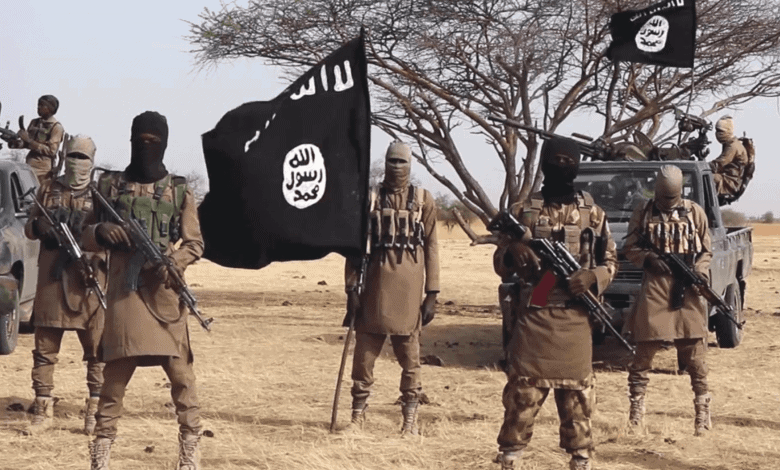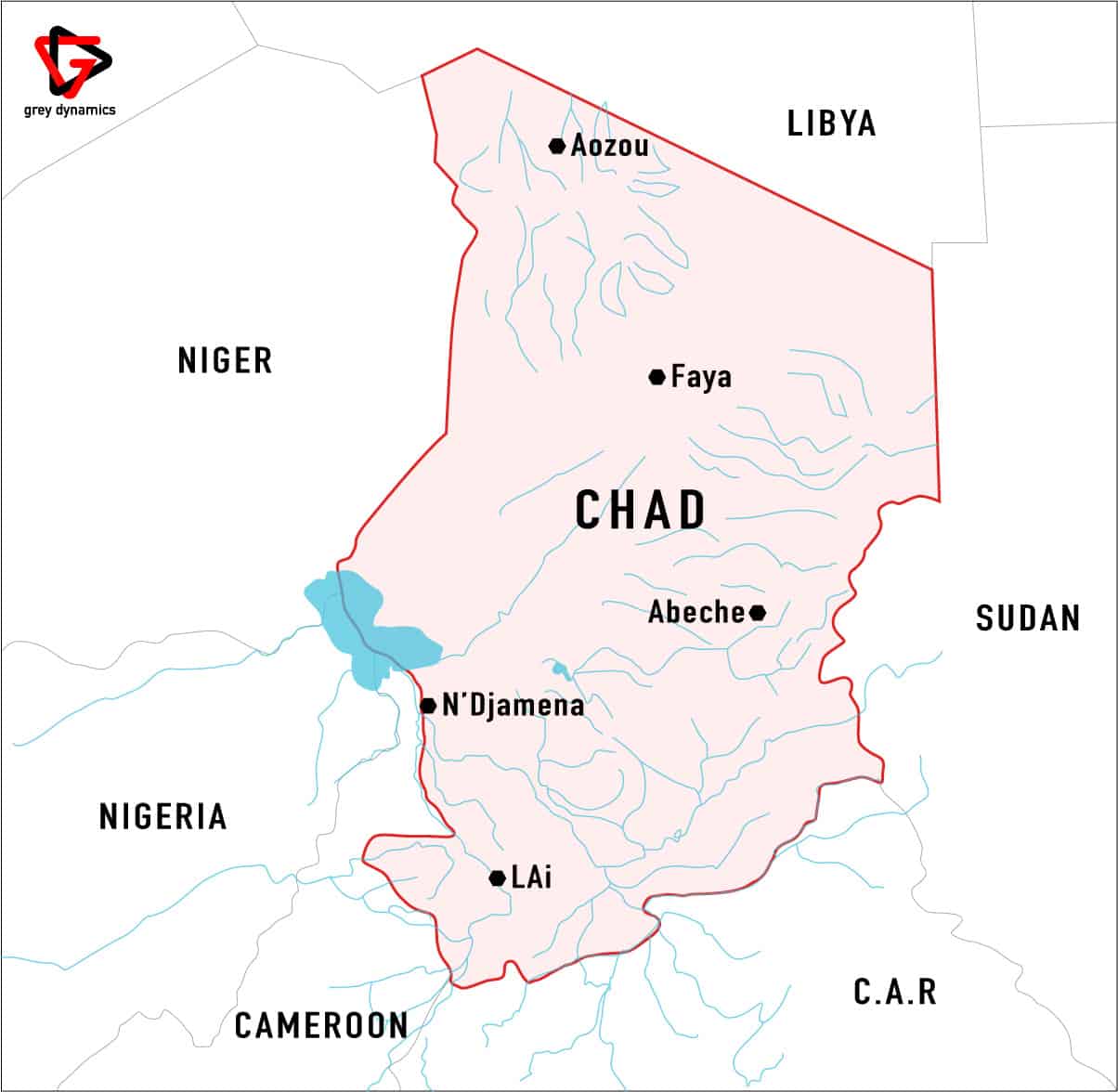
Boko Haram began to emerge in 2003 when several extremist Islamists initiated a youth movement in north-east Nigeria (Yobe State). The leading preacher, Mohammed Yusuf, had a strict, fundamentalist interpretation of the Qur’an and believed that the creation of Nigeria by British colonialists had imposed a Western and non-Islamic way of life on Muslims.
Why does this matter
KJ-1. The violent rise and resilience of the jihadist group Boko Haram in the Lake Chad basin since 2009 present security, humanitarian, and governance challenges.
KJ-2. The insurgency is now spread across Cameroon, Chad, Niger and Nigeria, meaning that Boko Haram is a transnational terrorist organisation with the capacity to operate in multiple countries across the Sahel.
KJ-3. Recent events indicate that Boko Haram is weakened in Chad. However, the insurgency is expected to continue, with potential increasing violence in the other three countries

Overview
From the Hausa language, Boko haram would roughly translate as “Western education is forbidden”, but also “Western fraud”. The group said it wants to be known by a phrase that translates to “People Committed to the Prophet’s Teachings for Propagation and Jihad”.
The violence has spread to Cameroon, Niger, and Chad, killing more than 30,000 people, and forcing two million from their homes. The group gained international attention when they kidnapped 276 schoolgirls from their dormitory in the town of Chibok in 2014.
Today Boko Haram has an umbrella structure, meaning that cohesion and coordination from the leadership exist only at the top. Cells carry out attacks for their own reasons, depending on their regional purposes and needs. Recruiting is focused upon young men susceptible to extremist ideology and hope to benefit financially or otherwise. Therefore, it is difficult to determine how many followers Boko Haram has.
A Transnational Organisation
Boko Haram is financing itself mainly through ransom kidnappings, bank robberies, and weaponry trafficking. The group has reportedly raided at least one Nigerian military arms depot. Illegal arms trafficking in West Africa is on the rise, while many insurgent groups cooperate with local smuggling networks to seize arsenals.
Since 2004, small groups of Nigerian extremist Islamists have travelled to northern Mali to train with insurgents. This process led to the formation of Al-Qaeda in the Islamic Maghreb (AQIM), later incorporated in the umbrella organisation Jama’at Nasr al-Islam wal Muslimin (JNIM). Local reports indicate that Boko Haram and AQIM often cooperate for arms procurement and training.
Boko Haram members are also suspected of having established links with al-Shabaab in Somalia. However, these links are not yet well documented, and Boko Haram needs to remain understood as an independent terrorist organisation in the Sahel.
How did Boko Haram manage to expand its insurgency in four countries?
Nigeria
There are several conditions in Nigeria that laid the ground for the formation of Boko Haram. Nigeria is Africa’s most populous country, having the largest economy and the biggest oil production. Yet peaking levels of corruption have left it without basic development and infrastructure. Disparities between the country’s north, which is mainly Muslim, and its south, which is mostly Christian, are also important in understanding the conflict. The north is much behind in terms of education and wealth due to complex economic, historical, and cultural factors.
In April 2014, Boko Haram attackers raided Chibok (north-eastern Nigeria) and kidnapped 276 schoolgirls, of which 219 remain missing. Since May 2013, the Nigerian government declared a state of emergency in three north-eastern states: Borno, Yobe, and Adamawa. The military usually responds to Boko Haram attacks with heavy-handed raids that have resulted in widespread accusations of human rights abuses. Such accusations include indiscriminate arrests, extra-judicial killings, and the burning of homes.
Cameroon
Boko Haram has spread to the Far North region of Cameroon, killing at least 275 people in 2019 alone (Amnesty International). In 2014, Boko Haram entered an open confrontation with the Cameroonian government. The region has gradually become an important refuge for Boko Haram fighters.
The group’s tactics were developed as the expansion advanced. Smaller incursions and occasional kidnappings soon grew into larger raids on towns and villages as well as strategic attacks against the Cameroonian army. Cameroon is now the second most targeted country after Nigeria.
Although enhanced cooperation between the Nigerian and the Cameroonian armies is highly needed in the fight against Boko Haram, the two country’s historically difficult relations slow down their military coordination. There is still a great need for a better exchange of intelligence. Cooperation has improved within the context of the region’s Multinational Joint Task Force – partly operational since November 2015 with the aim of countering Boko Haram.
The Cameroonian army claims it has dismantled most Boko Haram cells in Cameroon. Although Boko Haram seems weakened in Cameroon, it still has the capacity to conduct large-scale attacks.
Recruitment is facilitated by the fact that many young people are unemployed, poorly educated, and integrated, without seeing a future for themselves. The Far North is the poorest of Cameroon’s regions, with 70 percent of its people living on less than one dollar per day. Salafi Islam is on the rise and the youth is highly exposed to radicalisation. As for now, there are no public counter-radicalisation programs outside of the prison aimed at keeping young people and others away from extremist groups. The only efforts made in this direction come from civil society groups and the churches.
Chad
Initially, Boko Haram’s presence on the Chadian side of the lake was limited. The violence escalated in 2015, as a response to the Chadian forces’ intervention against the group in neighbouring states. Two suicide bombings in the capital N’Djamena and multiple attacks on villages and army posts followed.
In Chad, Boko Haram has caused the displacement of more than 100,000 people. Some community chiefs have been pressured by the national authorities to cooperate, while others have been accused of complicity or targeted by Boko Haram. The stigmatisation of the Buduma ethnic group, accused of colluding with Boko Haram, has been acute over the years, inciting further extremism.
Recent Events
On 5 April 2020, two Boko Haram bombers blew themselves up in Amchide, Cameroon, on the border with Nigeria. In Nigeria, sources inside the country’s intelligence apparatus stated that Boko Haram is weakened and is looking for surrender. The series of coordinated attacks on the group’s hideouts has decreased the chances for an orchestrated escape as the military has been attacking from several flanks. According to the local military forces, any attempt to escape now is considered impossible.
This month, forty-four Boko Haram militants in Chad have died in detention from poisoning. They were captured during a recent major army operation against the insurgent group around Lake Chad. The military offensive was launched after jihadists killed nearly 100 Chadian troops on 23 March during a seven-hour attack on an island base in Lake Chad. It was the deadliest attack on Chad’s army by Boko Haram.
In the past few weeks, the Chadian army has launched often attacks against Boko Haram. The jihadist group has reportedly reached out to some international NGOs to strike a deal with the Nigerian government towards granting amnesty to it.
On 5 March 2020, Boko Haram jihadists have attacked an army position in south-eastern Niger, following a temporary decrease in violence since the beginning of the year. For the attack on the Diffa region, jihadists used heavily armed vehicles, while the number of victims is unknown.
Future Developments
Local reports portray Boko Haram as a weakened group, looking forward to negotiating with the Nigerian government. However, past evidence indicates that the temporary decline of a terrorist group does not necessarily mean its ending. Boko Haram has a history of going underground for months or even more than a year and then re-emerging with violent attacks and raids.
Despite regional efforts to end Boko Haram’s campaign of violence, the group has stepped up its attacks in recent months. At the beginning of 2020, the group was described by local reports as weakened and divided. Yet at the end of March this year, the group conducted a sophisticated large-scale attack on a military base in Chad, killing 92 soldiers.
As a response to this attack, the Chadian army conducted several operations neutralising more than 1,000 jihadists. It is now important for the regional armies to closely monitor the situation, as an operational failure in chad might lead to increased violence in the other three affected countries. For example, Boko Haram might feel the need to prove its force by increasing the number of suicide attacks in other regions, as compensation for the 1,000 killed insurgents in Chad. The group might also step up its recruitment efforts, to replace their personnel loss. Therefore, enhanced intelligence collection and sharing, as well as social and economic support for the affected areas, is highly needed.

